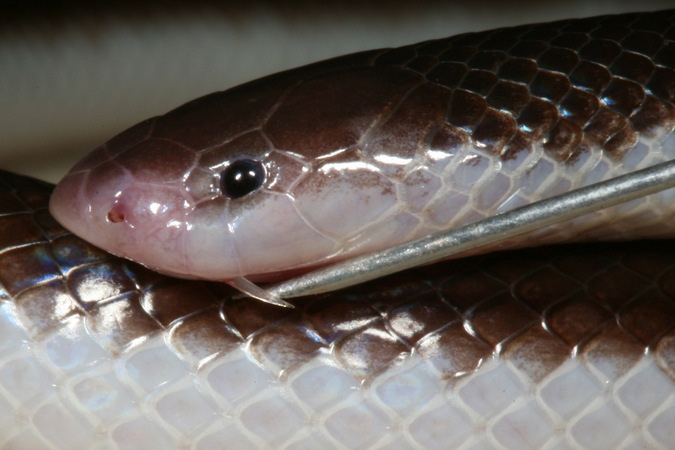
Media release by African Snakebite Institute, written by Johan Marais
While the snakebite season is not yet in full swing, a number of serious snakebites have occurred in the past few weeks.
Many bites from deadly snakes are difficult to prevent as people accidentally stand on snakes, especially at night. But the snake that has been biting lots of people recently is the poorly-known stiletto snake, also known as the side-stabbing snake.
It is a small nondescript snake that averages around 30 – 40 cm in length, dark brown to blackish in colour and spends most of its life underground. They usually emerge in the early evening, especially after summer rains and often end up in swimming pools. For some reason, people mistake them for mole snakes, even though they are far too thin to look like one.
The big danger is their fangs and potent cytotoxic venom. If grabbed behind the neck the snake will twist it head sideways with one fang protruding and will stab it into a thumb or finger. Otherwise, if caught at mid-body, the snake will thrash around with its fangs sticking out and the person catching it will get bitten once or twice.

Stiletto venom is potently cytotoxic, causing immediate pain, swelling, blistering and in many cases severe tissue damage that may result in a digit or two being amputated. It is an extremely painful and destructive bite but is not considered potentially lethal. There is no antivenom for this snake’s venom and doctors can only treat for pain and wait a few days to see how extensive the tissue damage is.
The stiletto snake is absent from the Western Cape, most of the Eastern Cape and most of Namaqualand, but common in KwaZulu-Natal, Gauteng, Mpumalanga and Limpopo as well as much of Northwest, entering Zimbabwe, Botswana and northern Namibia.
Please be warned and refrain from touching any snake.
To comment on this story: Login (or sign up) to our app here - it's a troll-free safe place 🙂.![]()






